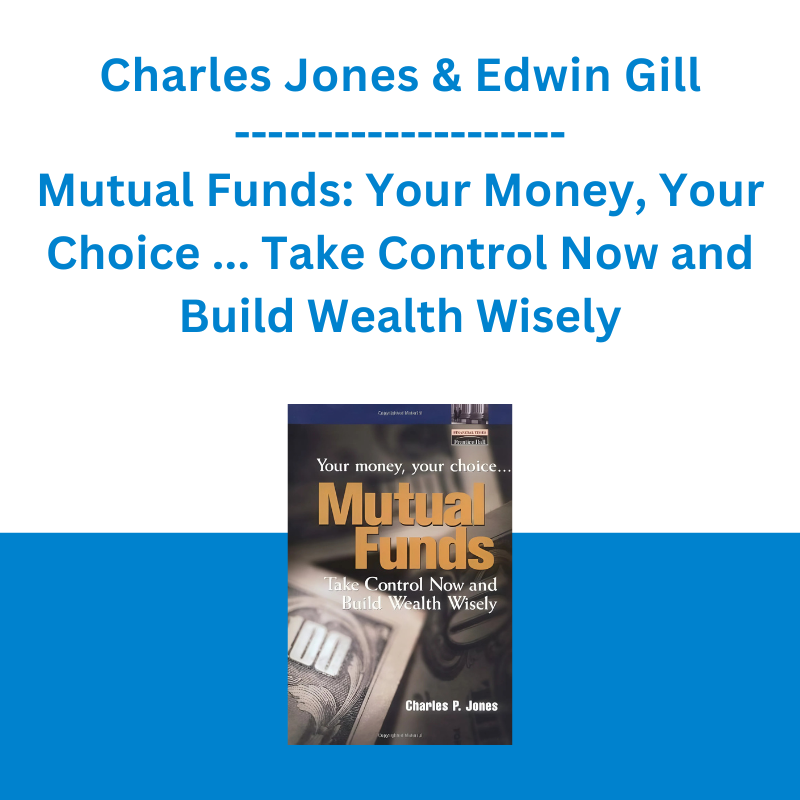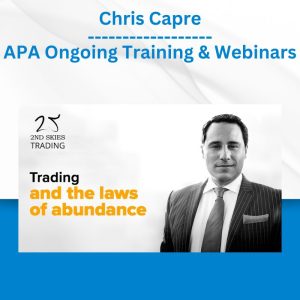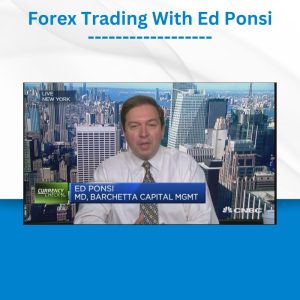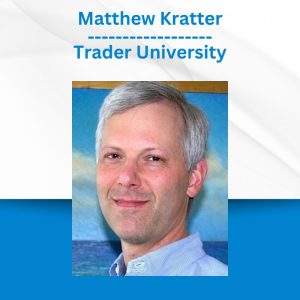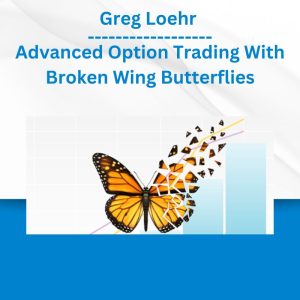*** Proof of Product ***
Exploring the Essential Features of “Charles Jones & Edwin Gill – Mutual Funds: Your Money, Your Choice … Take Control Now and Build Wealth Wisely (Financial Times Prentice Hall Books)”
Mutual Funds: Your Money, Your Choice gives you an unvarnished look at both the positives and the negatives of mutual fund investing: the real risks, the real costs, the real tax issues, and the real returns. Simply and clearly, without complicated charts or equations, top investment researcher Charles P. Jones helps you pick the right funds, and introduces brand-new alternatives – including folios, ETFs, and managed accounts – that can help you meet your goals when mutual funds won’t.
प्रोडक्ट विवरण
बैक कवर से
In the United States alone, more than 55,000,000 households invest in mutual fundsbut most of those investors aren’t achieving optimal returns, because they don’t fully understand their costs, their risks, or their alternatives. In Mutual Funds: Your Money, Your Choice, a leading investment researcher (and author of one of the world’s leading investment textbooks) explains exactly what individual investors must know to make the most of every investment dollar.
Simply and clearlywithout complicated charts or equationsCharles P. Jones reviews everything investors need to watch out for to achieve their objectives, including costs, tax issues, sector volatility, and other key issues. He also introduces and explains important new alternatives to mutual funds, such as folio investing, comparing their advantages, risks, and potential yields.
You can’t afford not to understand the mutual funds you’re staking your future on. This book gives you an unvarnished look at both the positives and the negatives. You’ll learn what to ask, where to get the answers, and how to act on that information to minimize your risks and maximize your real returns.
* Choosing the right mutual fund Index funds? Sector funds? Track records? Ratings? Managers? What really matters * Costs and taxes: Are they killing your returns? Management costs, taxable distributions: who’s really profiting from your investment? * “Sold, not bought”: the mass marketing of mutual funds Crucial information that gets lost in the marketing hype * Who’s watching out for you? Today’s mutual fund watchdogs: Are they really protecting investors’ interests? * Managed bond funds: a good investment? Why you should think twice before investing in managed bond funds * New alternatives to mutual funds Folios, ETFs, managed accounts: Are they right for you?What you must know about mutual fund investing right now.
Mutual fund secrets the marketers won’t tell you
Expert techniques for maximizing return, minimizing taxation, and managing risk
Hidden costs, taxable distributions, sector volatility, poor investment safeguards, and other crucial issues
New alternatives to mutual funds: exchange-traded funds, folios, managed accounts, and more
No equations, no complicated graphs, just simple explanations you can act on
Are you getting the results you expect from your mutual fund investments?
If you’re like millions of investors, the answer is NO: your share values are down, you’re paying higher taxes than you expected, and the vaunted expertise of your fund managers is proving to be useless-or worse.
It doesn’t have to be that way. You can make healthy returns in mutual funds-and you can find alternatives that will help you accomplish your financial objectives when mutual funds won’t. This book will show you how.
Charles P. Jones tells you what the mutual fund marketers won’t. You’ll discover the real risks of mutual fundsand the tough questions you simply must ask if you’re going to make the right decisions about them.
You can no longer afford to let the “professionals” make your key decisions for you. Take control of your investments, with the one book that shows you how: Mutual Funds: Your Money, Your Choice.
लेखक के बारे में
CHARLES P. JONES is Edwin Gill Professor of Finance at North Carolina State University and author of Investments: Analysis and Management, Eighth Edition, one of the world’s leading investment textbooks. A Chartered Financial Analyst, Jones’s research interests include rates of return on financial assets, asset allocation decisions, and earnings surprises.
More than 50 of Jones’s papers have been published in the world’s leading journals on finance and investing; he speaks and consults widely on topics of managerial finance, investment, and capital markets. In 1998-99, he was honored with a North Carolina State University Board of Governors Teaching Award, having previously been the recipient of one of the university’s Outstanding Teaching Awards.
अंश। © अनुमति से पुनर्मुद्रित। सभी अधिकार सुरक्षित हैं।
PrefaceMany individuals own mutual funds today. Indeed, the mutual fund industry, which reached $7 trillion in assets by 2000, comprises the bulk of many investors’ financial assets, whether for retirement or taxable savings purposes. To a large extent, mutual funds are the investment vehicle for the majority of households in the United States.
Mutual funds have served investors well, and their rapid growth reflects their popularity. They might continue to be as popular as ever in the future, but the situation appears to be changing. The change to date has gone almost unnoticed, and the impact is as yet small. Like a snowball rolling downhill, however, this change appears to be gaining in both speed and strength.
The simple truth is there are two sides to the issue when it comes to owning mutual funds. Most investors are continually exposed to only one sidewhy they should own funds. Only now are some asking the right questions. As more and more investors assume increasing responsibility for their investments, given the sharp drops in 2000 and 2001 and the widely publicized failure of companies such as Enron, an understanding of all sides of important investing issues becomes more critical. That is what I hope to share with readers here.
This change in investors’ perceptions about mutual funds is occurring for two reasons. First, the warts have become more obvious. Witness the debacle in 2001 as income tax time rolled around. Many individuals discovered they had to pay taxes on the large distributions made by a number of well-known funds to shareholders for the year 2000 just as the price of their mutual fund shares was declining dramatically. Shareholders are also increasingly discovering that costs are higher, performance is worse, and safeguards are fewer than they originally thought.
Second, only very recently have viable alternatives to mutual funds become available to average investors, and this has changed the game considerably. The previous situation was like voting in the Soviet Union before communism collapsedyou could vote, but there was only one candidate. Now, investors have real alternatives to mutual funds that are growing rapidly. They may very well decide to take advantage.
In short, investors should consider both the pros and cons of mutual funds as well as their alternatives. If you decide to continue with traditional mutual funds, that’s fine. Mutual funds have a long and solid history, they have served many investors well, and they are not going away. You can continue to build wealth in a systematic manner by owning mutual funds. By considering the issues discussed in this book, you can make much better decisions about the mutual funds you own and avoid some of the problems that can arise.
However, by considering both sides of the coin, as well as newly emerging alternatives, you will be able to make more intelligent decisions. Until now, most investors have not been able to put the whole story together. They see bits and pieces, but most of the available information tends naturally to focus on the positive side. Even if investors did gain a clear understanding of both sides of mutual funds, they did not have readily available investment alternatives. Now they do!
This book focuses primarily on mutual funds because of their overall importance to American investors. The objective here is not to castigate mutual funds and make them out to be the villains. Instead, I seek to fairly consider the issue of mutual fund ownership and ask the hard questions that typically do not get asked. This means examining a number of potential negatives about mutual funds-issues that investors need to be aware of. By recognizing some of the potential problems, investors can make better decisions and avoid the pitfalls.
I also provide investors with the information they need to consider their alternatives. Although all of these alternatives taken together are still less important than mutual funds, they are becoming more important all the time. If you are to truly take control of your investment decisions and make sound decisions, you need to be aware of all of your alternatives and seriously consider using one or more of them when it is to your advantage.
If after reading the book you can say to yourself, “I understand the issues much better, and I think I can make intelligent decisions about my mutual funds as well as my alternatives,” I have accomplished my goal. You will be a smarter, more successful investor. That’s reward enough!
प्रोडक्ट का विवरण
प्रकाशक : Financial Times/ Prentice Hall (23 अगस्त 2002)
भाषा : अंग्रेज़ी
Please see the full list of alternative group-buy courses available here: https://lunacourse.com/shop/

